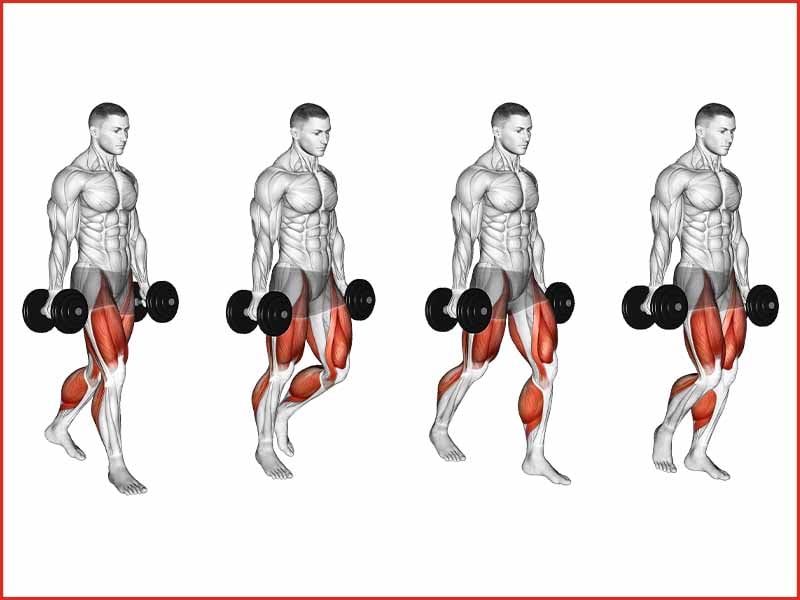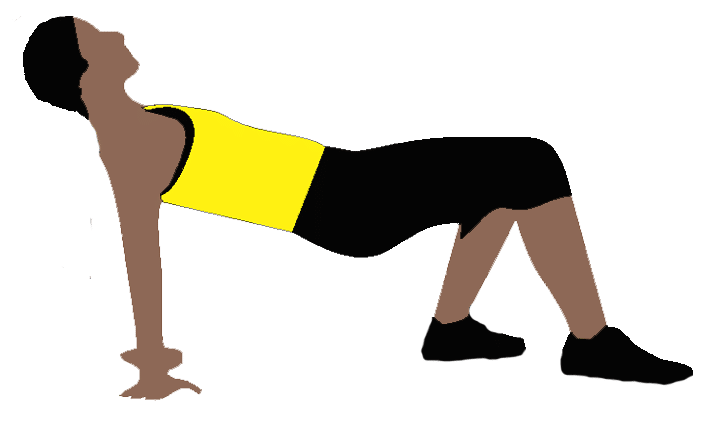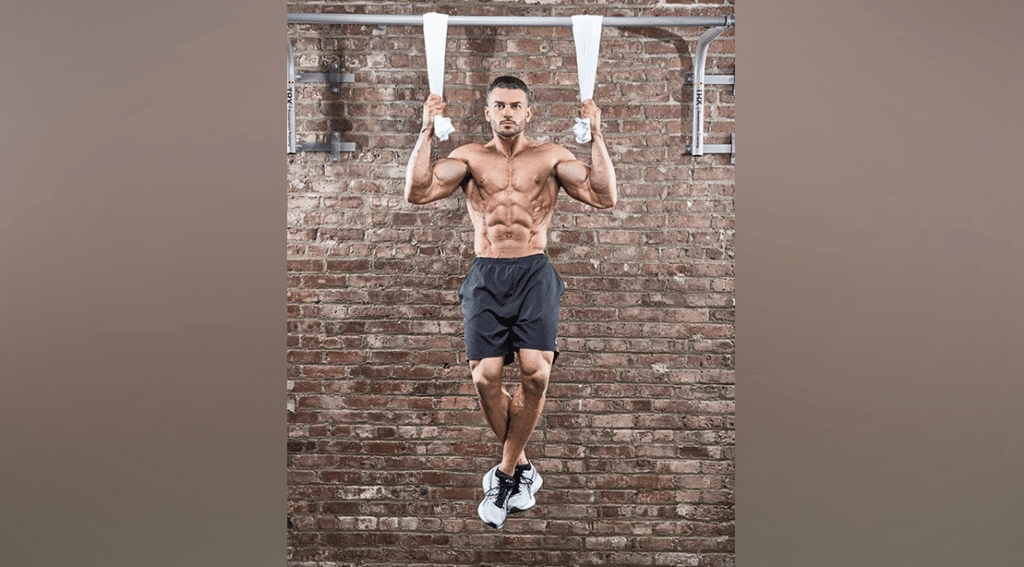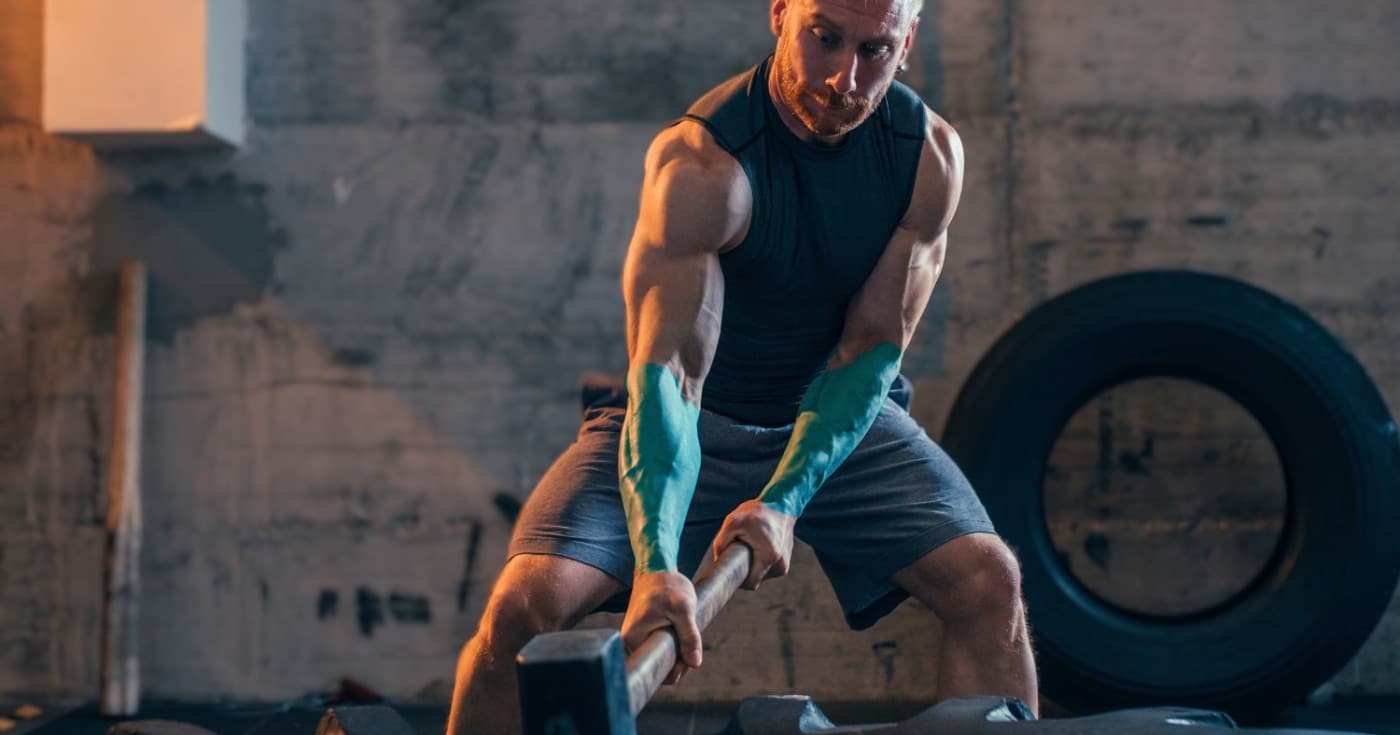This article details practical, effective exercises like Wrist Curls and Hammer Curls, offering a straightforward approach to building robust forearm muscles.
Also, Dive into the functional anatomy of your forearms and uncover the critical role of flexors and extensors in everyday tasks.
Ready to elevate your forearm game? The key techniques and insights await inside.
Jump to:
- Understanding Forearm Anatomy and Functionality
- Essentials of Forearm Training
- Grip Strength Development Techniques
- Targeted Forearm Isolation Exercises
- Compound Movements for Forearm Involvement
- Incorporating Forearm Work in Upper Body Training
- Preventing Injuries and Promoting Forearm Health
- Advancing with Creative Forearm Challenges
- Assessing Progress and Setting Achievable Goals
- References
Understanding Forearm Anatomy and Functionality

When I examine the anatomy of the forearm, I focus on the myriad of muscles that govern its complex movements. The forearms play a crucial role in daily activities, managing tasks that require a grip, rotation, and fine manipulation.
Forearm Muscles
The muscles in the forearm can be categorized into two groups: the flexors and extensors. The flexors are primarily responsible for curling the fingers and bending the wrist toward the palm. In contrast, the extensors aid in spreading the fingers and bending the wrist back away from the palm.
Flexors
- Flexor Carpi Radialis: Helps in wrist flexion and abduction.
- Flexor Carpi Ulnaris: Assists with wrist flexion and adduction.
- Flexor Digitorum Superficialis: Crucial for finger flexion.
Extensors
- Extensor Carpi Radialis Longus: Facilitates wrist extension and abduction.
- Extensor Carpi Radialis Brevis: Also involved in wrist extension and abduction, but provides more power.
- Extensor Carpi Ulnaris: Aids in wrist extension and adduction.
One of the key forearm muscles is the brachioradialis, which is unique because it assists with both flexion and supination of the forearm. It’s a muscle that often becomes prominent when the forearm is in a midway position between pronation and supination.
Functionality
My understanding of these muscles’ contribution to forearm functionality involves grasping how they work in tandem for complex movements. The synchronization of these muscles provides the fine motor skills necessary for tasks such as writing, typing, and playing musical instruments. The forearm muscles also contribute importantly to the strength and stability required for lifting objects and performing physical exercises.
To maintain a healthy range of motion and strength in the forearms, it’s essential to involve both the forearm flexors and extensors in exercise routines, ensuring that both muscle groups stay balanced.
Essentials of Forearm Training
When it comes to forearm training, I focus on a combination of strength training and conditioning to effectively build muscle mass and increase forearm size. My workout routine includes a variety of exercises that target not just the forearms but also the contributing muscles that support grip and arm movements.
Key Exercises:
- Wrist Curls: I use a barbell or dumbbells for this classic exercise, ensuring full range of motion for optimum muscle growth.
- Reverse Wrist Curls: Complementing wrist curls, this targets the extensors on the outside of the forearms.
- Hammer Curls: Essential for building forearm strength, hammer curls target the brachioradialis, a major muscle of the forearm.
Weekly Routine:
- Mondays & Thursdays: I incorporate forearm exercises into my strength training regimen.
- Tuesdays & Fridays: I dedicate these days to forearm-focused workouts to ensure proper recovery and muscle growth.
Training Tips:
- Consistency: My progress relies on maintaining a regular schedule.
- Progressive Overload: I gradually increase the weight or reps to challenge my forearms and promote muscle growth.
- Variety: Rotating exercises prevents plateaus and keeps the workouts engaging.
By mixing these exercises into my routine, I’ve noticed considerable improvements in both forearm size and grip strength. It’s essential not to rush these movements; controlled execution maximizes muscle tension and the efficacy of each workout. Balancing my approach with adequate rest and nutrition, my forearms have become stronger and more defined, reflecting the hard work put into my training.
Grip Strength Development Techniques
Developing a robust grip is essential for enhanced forearm strength and overall upper body conditioning. Each exercise technique I discuss targets specific muscles in the forearms to improve your grip strength.
Farmer’s Walk and Other Carries

Farmer’s Walk
The farmer’s walk is a powerful exercise to intensify grip endurance and arm strength. I recommend picking up heavy dumbbells or kettlebells, one in each hand, and walking for a designated distance or time. Ensure your back is straight and shoulders are packed to avoid strain.
Other Carries
Suitcase carries and overhead carries are alternate variations to target different grip angles and forearm muscles. A suitcase carry involves carrying a weight on one side at a time, simulating carrying a suitcase, while an overhead carry challenges your stability and grip by holding the weight above your head.
Crab Walk

The crab walk engages your grip by necessitating the constant pressure of your hands against the floor to uphold your body weight. It’s beneficial as it also triggers your triceps and shoulder muscles. To perform the crab walk, sit on the floor, lift your hips off the ground, and walk forward and backward using your hands and feet.
Towel and Plate Exercises
Towel Exercises – Gripping a towel adds an unstable element that enhances grip training. Wrap a towel around pull-up bars or weight handles to create a thicker and more challenging grip surface.
Plate Pinches – Plate pinches strengthen your pinch grip, vital for tasks involving the thumb and fingers. Pinch two weight plates together and lift them, holding for time or until grip fatigue. Start with lighter plates and progressively increase the weight.
Wrist Rollers and Grip Crushers
Wrist Roller – A wrist roller is undoubtedly one of the best tools to develop forearm muscle and grip strength. It involves rolling a weighted cord attached to a bar, alternating between wrist flexion and extension.
Grip Crushers – Grip crushers and forearm squeezes specifically target the crushing grip. They come in various resistance levels and are used by squeezing the handles together repeatedly. These are great for training grip strength and can be used nearly anywhere, from sitting at a desk to walking.
Targeted Forearm Isolation Exercises
In my training experience, I’ve found that isolation exercises specifically engage and strengthen the forearm muscles, promoting muscle growth and enhancing grip strength. Effective workouts for this area focus on movements that target the flexors, extensors, pronators, and supinators.
Wrist Curls and Extensions
Wrist curls and extensions are fundamental exercises that target the forearm flexors and extensors respectively. Here’s how I typically incorporate them into my routine:
- Dumbbell Wrist Flexion: I sit with my forearms on my knees or a bench, palms facing up, and a dumbbell in each hand. Then, I curl the weights towards my wrist while keeping my arms stationary. This movement focuses on wrist flexion.
- Dumbbell Wrist Extension: In a mirrored position with palms facing down, I lift each dumbbell by extending my wrists. This exercise strengthens the opposing muscles responsible for wrist extension.
I emphasize controlled movements to maximize tension on the forearm muscles and prevent momentum from diminishing the exercise’s impact.
Reverse Curls and Hammer Curls
Reverse and hammer curls target the brachioradialis, a major muscle that crosses the elbow and wrist.
- Dumbbell Reverse Curl: With my palms facing down, I grip dumbbells and flex my arms at the elbow. The key here is to keep my wrists straight, engaging the forearm extensor muscles throughout the movement.
- Hammer Curl: This exercise combines elements of pronation and supination. Holding the dumbbells with a neutral grip, thumbs facing up, I curl them towards my shoulders. It’s crucial to keep my wrists in line with my forearms to properly engage both the brachioradialis and the deeper forearm muscles.
Across these exercises, I focus on slow, deliberate movements, fully controlling the weight during both the concentric and eccentric phases to effectively isolate and train the forearm muscles.
Compound Movements for Forearm Involvement
In my experience, integrating compound movements into an upper body workout not only enhances overall strength but specifically targets forearm development. Utilizing variations such as towel movements alongside traditional deadlifts and rows effectively engages the forearms in a unique way.
Why Include Towel Movements?

Incorporating towel movements into your regimen significantly increases grip strength. This is because holding onto a towel requires more effort from the forearm muscles compared to a standard pullup bar, providing a rigorous challenge for the grip.
Towel Pull-ups
Towel pull-ups are an excellent variation to traditional pull-ups for strengthening forearms. Loop a towel over a pull-up bar and grab the ends with both hands. Perform dead hangs to build up your tolerance, then progress to full pull-ups to enhance forearm involvement and improve overall upper body strength.
Towel Inverted Rows
Towel inverted rows target the back and forearms concurrently. Secure a towel around a bar, lie underneath it, and pull your body upwards. The instability of the towel boosts forearm engagement as you struggle to maintain a firm grip, amplifying the exercise’s intensity.
Deadlifts and Rows
Deadlifts and rows are foundational back workouts that inherently work the forearms. While performing these exercises, maintaining a strong grip throughout the movement is crucial. This constant tension drives growth and strength in the forearms, particularly during heavy lifts where my grip is challenged to its limits.
Incorporating Forearm Work in Upper Body Training
When I integrate forearm exercises into my upper body regimen, I focus on complementing the major muscle groups to enhance my overall arm workouts and upper body strength.
Integrating with Arm and Shoulder Exercises
For a comprehensive arm and shoulder workout, I like to include movements that target my biceps, triceps, and forearms together. One of my go-to combinations is performing a superset that pairs bicep curls with forearm wrist curls. After completing a set of bicep curls, I immediately transition to wrist curls without resting, ensuring my forearms get worked directly after the biceps. For shoulders, I make sure to incorporate an overhead press into my routine. While it primarily targets the deltoids, my forearms are also engaged to stabilize the weight overhead, particularly when I use free weights.
Upper Back and Lat Workouts
My upper back and lat workouts benefit from exercises that also engage the forearms. Pull-ups and rows are staples in my routine for giving attention to my lats and upper back. During these exercises, I maintain a firm grip and often vary the grip width and style—such as using a towel wrap around the bar for pull-ups—to further challenge my forearm strength. In addition, while doing a typical back exercise like the bent-over row, I switch to a reverse grip on occasion to emphasize forearm engagement.
Preventing Injuries and Promoting Forearm Health
When I focus on maintaining forearm health and preventing injuries, I begin with a mix of exercises targeted at increasing stability and strength. These workouts are not just for bodybuilders or athletes; they are essential for anyone looking to maintain healthy wrist joints and reduce the risk of forearm injuries.
Strengthening Exercises:
- Wrist curls and reverse wrist curls are fundamental exercises that enhance my forearm muscles, supporting the wrist joint.
- Wrist extensions and wrist roller exercises also contribute to building the extensor muscles.
Stability Workouts:
- I often include pronation and supination movements with a dumbbell or a resistance band to improve my forearm stability.
- For increased stability, I also practice isometric holds, such as the farmer’s carry, where maintaining a strong grip over time is key.
Injury Prevention Techniques:
- I make sure to warm up properly with dynamic stretches before engaging in intense activities to prevent any sudden injuries.
- Incorporating exercises from systematic reviews that focus on both high-intensity and low-intensity resistance training is beneficial for my forearm bone health.
Rest and Recovery:
- Adequate rest between workouts allows my muscles to recover and grow stronger, reducing the risk of overuse injuries.
- I’ll often use a combination of ice therapy or menthol gel post-exercise to manage any inflammation, as evidenced by studies comparing the effects of ice and menthol gel on blood flow and muscle strength of the lower arm.
By incorporating these strategies, I keep my forearms robust and resilient, prepared for the demands of daily tasks and specialized activities alike.
Advancing with Creative Forearm Challenges
When targeting the forearms, incorporating unconventional exercises can lead to breakthroughs in strength and dexterity. By adopting novel tools and movements, I am able to stimulate the muscles in dynamic ways, forge greater muscle engagement, and keep my workouts fresh and challenging.
Implementing Unconventional Tools and Movements
In my quest to enhance forearm strength, I’ve experimented with crab walks. This movement not only activates the entire upper body but particularly challenges the forearms’ stability and endurance. I focus on maintaining tension in my forearms as I move, which provides a unique challenge compared to static exercises.
One of my favorites for direct forearm engagement is the Zottman curl. The rotation of the dumbbell as I alternate between a regular curl and a reverse curl targets both the flexors and extensors of the forearm.
To build explosive power and grip strength, I integrate kettlebell swings into my routine. The dynamic nature of the kettlebell swing demands constant grip readjustment, which improves my forearm strength and resilience.
For static holds, I regularly perform pull-up bar hangs. This simple yet effective exercise taxes the grip and forearm musculature through extended holds, which I find greatly enhances my muscular endurance.
I have found that behind-the-back cable curls contribute significantly to both my forearm size and my grip prowess, as they isolate the forearm muscles without overloading the joints.
Another tool in my arsenal is the towel cable row. By wrapping a towel around the cable handle and pulling, I’m engaging my forearms in a way that traditional rows might not, specifically targeting my grip strength.
To pinpoint focus on the wrists and forearms, I rely on behind-the-back barbell wrist curls. This exercise allows me to concentrate on the forearm flexors and provides a full range of motion for optimal muscle activation.
Additionally, the functional exercise farmer’s carry amplifies my forearm capacity. The act of carrying heavy weights over a distance mimics real-world activities and fortifies my grip endurance.
Assessing Progress and Setting Achievable Goals
When I embark on a journey of forearm development, I find it crucial to keep meticulous records to track my progress. I start by setting clear, measurable goals that align with my desired aesthetics and strength. For instance, I may aim to increase my wrist curl weight by 5 pounds in a month.
Tracking Progress:
I use a straightforward method to monitor my advancements:
- Week 1: Record the initial weight and reps for wrist curls, reverse curls, and hammer curls.
- Week 4: Evaluate increments in weight or reps and record any changes in forearm circumference.
Setting Goals:
My goals must be specific and time-bound. Here’s how I structure them:
- Short-term Goal: Increase forearm workout intensity by 10% in 2 weeks.
- Long-term Goal: Achieve an increase in forearm size by 1 inch in 6 months.
I incorporate a variety of exercises that target different parts of my forearms to ensure balanced growth and symmetry. It’s crucial not to overlook the importance of rest and recovery, as this is when my muscles rebuild and strengthen.
By staying disciplined and adhering to my exercise regimen, I make steady progress towards my goals. Regular assessments help me stay motivated and make any necessary adjustments to my workout plan. Through consistent effort and strategic planning, I effectively enhance my forearm strength and aesthetics.
References
- https://www.sciencedirect.com/science/article/abs/pii/S0003999319309852
- https://journals.humankinetics.com/view/journals/jsr/20/3/article-p355.xml














